Winter destinations offer a magical escape with their snowy landscapes, festive lights, and cozy atmospheres. However, packing for cold climates can be a daunting task. You want to stay warm and comfortable without overpacking or sacrificing style. In this blog post, we’ll dive into essential travel wardrobe tips for winter destinations, share a personal anecdote to highlight the importance of smart packing, and provide practical advice to help you navigate the chilly months with ease and flair.
The Chill of Winter Travel
Winter travel has its unique charm, from skiing down pristine slopes to sipping hot cocoa by a roaring fire. But with the beauty of snowy adventures comes the challenge of staying warm and prepared for the cold. Packing the right clothing is crucial to ensure your trip is enjoyable and free from the discomfort of inadequate attire. Whether you’re planning a trip to a bustling winter city or a remote mountain retreat, these wardrobe tips will help you pack efficiently and stylishly.
About the Author and My Trend Boutique
A Personal Anecdote: The Frosty Fiasco
Let me share a story from a few winters ago when I decided to visit a charming mountain town for a holiday getaway. Excited about the trip, I packed my favorite outfits without giving much thought to layering or the specific demands of the cold climate. On the first day, I found myself battling unexpected snowstorms and biting winds. My thin sweater barely kept me warm, and I quickly realized the importance of proper winter packing.
Determined to make the most of the trip, I visited a local outdoor gear shop and revamped my wardrobe with appropriate layers and accessories. The transformation was incredible—I felt warm, comfortable, and even more confident to explore the winter wonderland. This experience taught me valuable lessons about packing smart for cold climates, which I’m eager to share with you.
Essential Layers for Winter Travel
Layering is the cornerstone of staying warm in cold climates. By combining different layers, you can effectively manage your body temperature and adapt to varying conditions. Here are the essential layers to include in your winter travel wardrobe:
1. Base Layer: The Foundation of Warmth
The base layer is the layer closest to your skin and plays a critical role in moisture management. It helps wick sweat away from your body, keeping you dry and warm.
- Materials: Opt for moisture-wicking fabrics like merino wool or synthetic blends. Avoid cotton, as it retains moisture and can make you feel damp and cold.
- Options: Long-sleeve thermal tops, leggings, and moisture-wicking socks.
Pro Tip: Choose a snug fit for your base layer to maximize its effectiveness without restricting movement.
2. Mid Layer: Insulation for Added Warmth
The mid layer provides insulation by trapping heat and retaining body warmth. It should be lightweight yet effective at keeping you warm.
- Materials: Fleece, down, or synthetic insulation.
- Options: Fleece jackets, down sweaters, or insulated vests.
Pro Tip: Invest in a versatile mid layer that can be worn on its own or combined with other layers for added warmth.
3. Outer Layer: Protection Against the Elements
The outer layer shields you from wind, rain, and snow. It should be both waterproof and breathable to ensure comfort in harsh weather conditions.
- Materials: Waterproof and windproof fabrics like Gore-Tex or similar materials.
- Options: Waterproof jackets, ski coats, or insulated parkas.
Pro Tip: Look for outer layers with adjustable hoods and cuffs to provide extra protection against the elements.
Smart Packing Strategies for Winter Travel
Packing efficiently for a winter trip requires careful planning and organization. Here are some strategies to help you pack smartly:
1. Choose Versatile Pieces
Select clothing items that can serve multiple purposes. Versatile pieces reduce the number of items you need to pack while ensuring you have options for different activities and weather conditions.
- Examples: A fleece jacket that can be layered over a thermal top or used as a standalone piece for milder days.
- Pro Tip: Stick to a cohesive color palette to make mixing and matching easier.
2. Utilize Packing Cubes
Packing cubes are a traveler’s best friend, helping you organize your wardrobe and maximize space in your suitcase.
- Benefits: Keep similar items together, reduce wrinkles, and make it easier to find what you need without unpacking everything.
- Pro Tip: Use different colored cubes for base layers, mid layers, and outer layers to streamline your packing process.
3. Roll, Don’t Fold
Rolling your clothes instead of folding them can save space and minimize wrinkles, especially for items like thermal tops and leggings.
- How-To: Lay the garment flat, fold in the sleeves or legs, and roll tightly from one end to the other.
- Pro Tip: Roll similar items together and place them in the same packing cube for easy access.
4. Pack Lightweight Accessories
Accessories like scarves, hats, and gloves can add warmth without taking up much space. Choose lightweight options that can be easily packed and worn as needed.
- Examples: A lightweight merino wool scarf, a packable beanie, and thin gloves.
- Pro Tip: Opt for accessories in neutral colors that can complement any outfit.
5. Layer Your Outfits
Plan your outfits around layers to ensure you’re prepared for varying temperatures and conditions. Start with your base layer, add your mid layer, and top it off with your outer layer.
- How-To: Choose outfits that can be easily adjusted by adding or removing layers as needed throughout the day.
- Pro Tip: Mix and match colors and textures to create multiple looks from a few key pieces.
Must-Have Items for Your Winter Travel Wardrobe
To ensure you’re fully prepared for your winter adventure, here are some must-have items to include in your packing list:
Clothing
- Thermal Base Layers: Tops and bottoms made from moisture-wicking fabrics.
- Fleece Jacket or Pullover: For added insulation.
- Insulated Waterproof Jacket: Essential for protection against snow and wind.
- Warm Pants: Consider insulated or lined pants for extra warmth.
- Versatile Sweaters: For layering and added comfort.
- Waterproof Boots: Sturdy and insulated to keep your feet warm and dry.
- Wool Socks: Thick socks to provide warmth and comfort.
Accessories
- Beanie or Warm Hat: To protect your head and ears from the cold.
- Scarf: Adds warmth and can be used as a stylish accessory.
- Gloves or Mittens: Insulated and waterproof options are ideal.
- Thermal Socks: For extra warmth on particularly cold days.
- Sunglasses: Protect your eyes from the glare of the snow.
- Hand and Foot Warmers: Portable heat packs for added warmth during outdoor activities.
Additional Essentials
- Travel Umbrella: Compact and lightweight for unexpected snow showers.
- Reusable Water Bottle: Staying hydrated is important, even in cold weather.
- Backpack or Daypack: For carrying your essentials during daily excursions.
- Compression Sacks: To save space and keep bulky items organized.
Style Tips for Winter Travel
Staying warm doesn’t mean sacrificing style. Here are some tips to help you look chic while keeping cozy:
1. Embrace Layers
Layering not only keeps you warm but also adds depth and interest to your outfits. Experiment with different textures and colors to create stylish ensembles.
- Example: Pair a chunky knit sweater with a sleek down jacket and a colorful scarf.
- Pro Tip: Mix lightweight and bulky items to achieve a balanced look.
2. Choose Statement Pieces
Incorporate statement pieces into your wardrobe to elevate your outfits. A bold coat, vibrant scarf, or unique hat can add personality and flair to your look.
- Example: A bright red parka can serve as the focal point of your outfit.
- Pro Tip: Use accessories to introduce pops of color and break up neutral tones.
3. Opt for Neutral Colors
Neutral colors like black, gray, navy, and beige are versatile and timeless, making them perfect for winter wardrobes. They can be easily mixed and matched with other pieces.
- Example: A gray sweater paired with black leggings and a navy coat.
- Pro Tip: Add interest with different textures and materials within the same color palette.
4. Invest in Quality Footwear
Comfortable and stylish footwear is essential for winter travel. Choose boots that are both functional and fashionable, suitable for walking in snow and ice.
- Example: Waterproof leather boots with a sturdy sole.
- Pro Tip: Break in your boots before your trip to avoid discomfort and blisters.
5. Accessorize Thoughtfully
Accessories can transform a simple outfit into something special. Choose scarves, hats, and gloves that complement your wardrobe and add warmth.
- Example: A patterned scarf can add visual interest to a monochromatic outfit.
- Pro Tip: Select accessories that can be easily mixed and matched with different outfits.
Picture Gallery
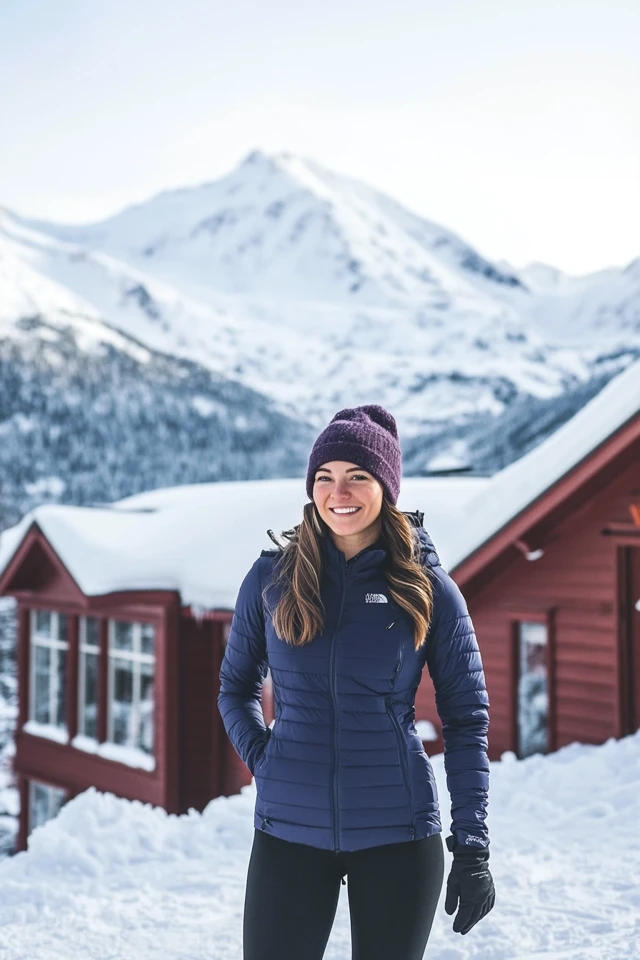
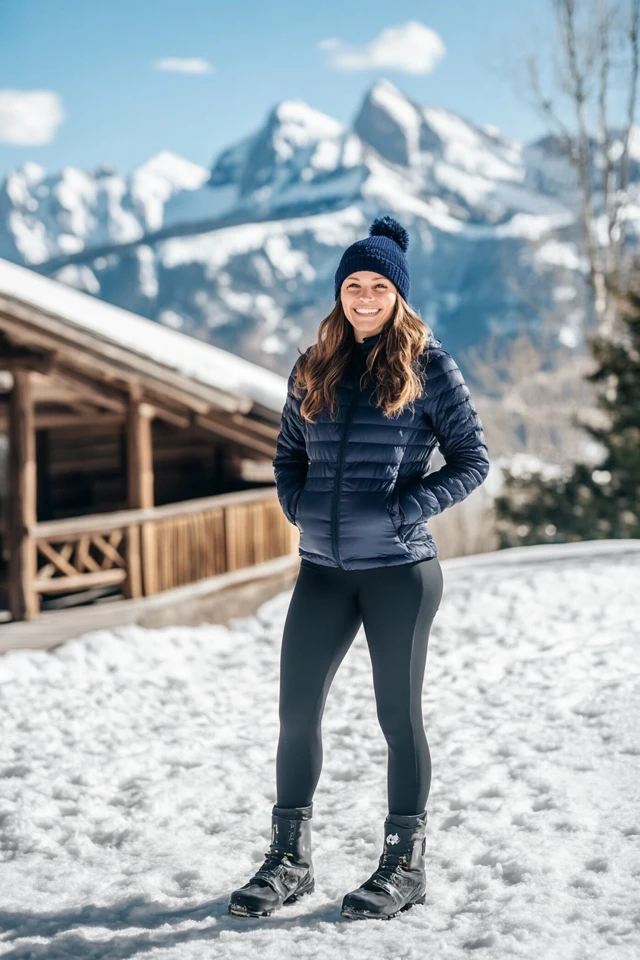
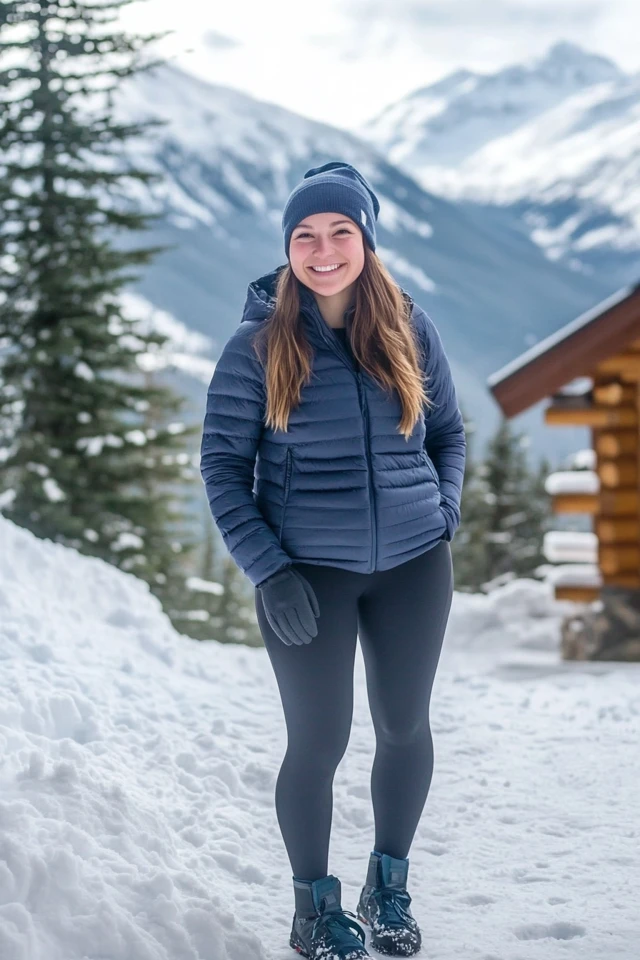
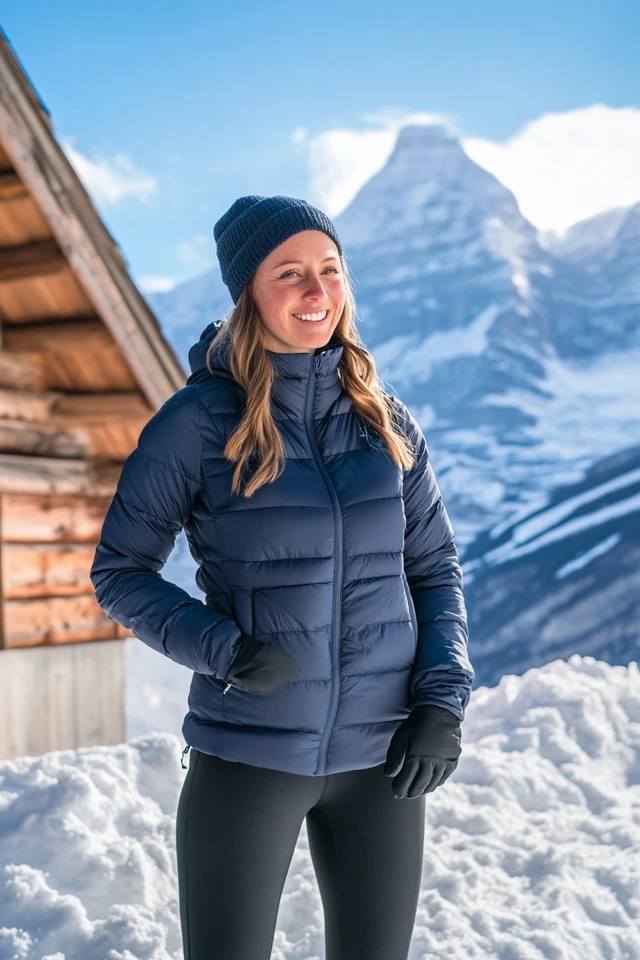
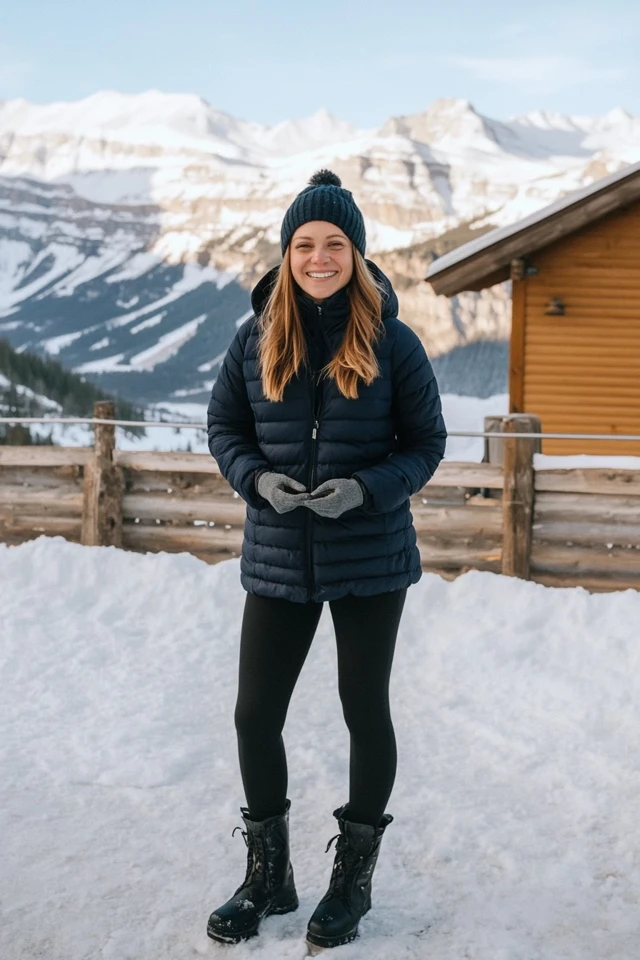
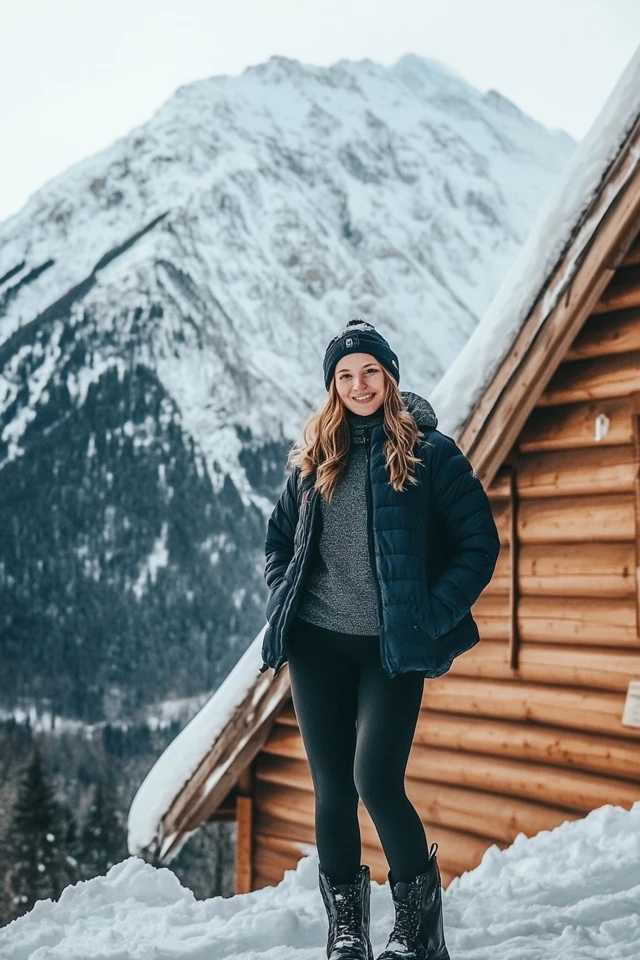
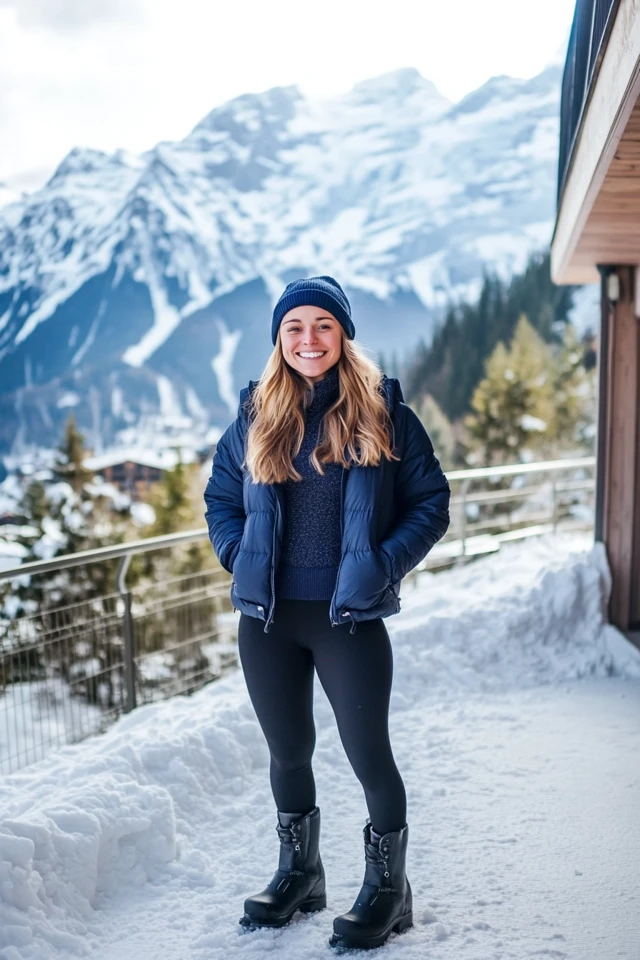
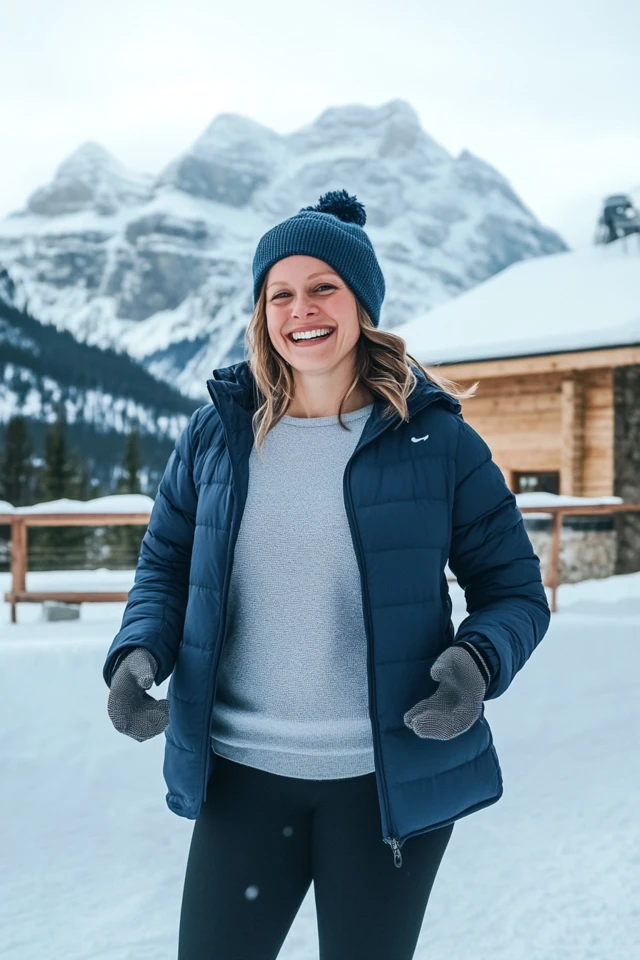
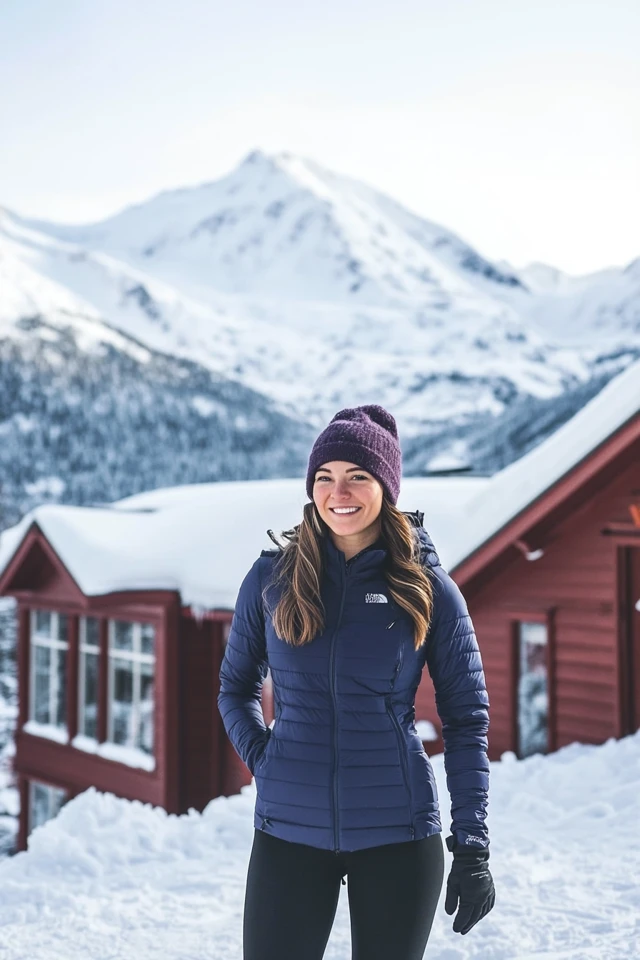
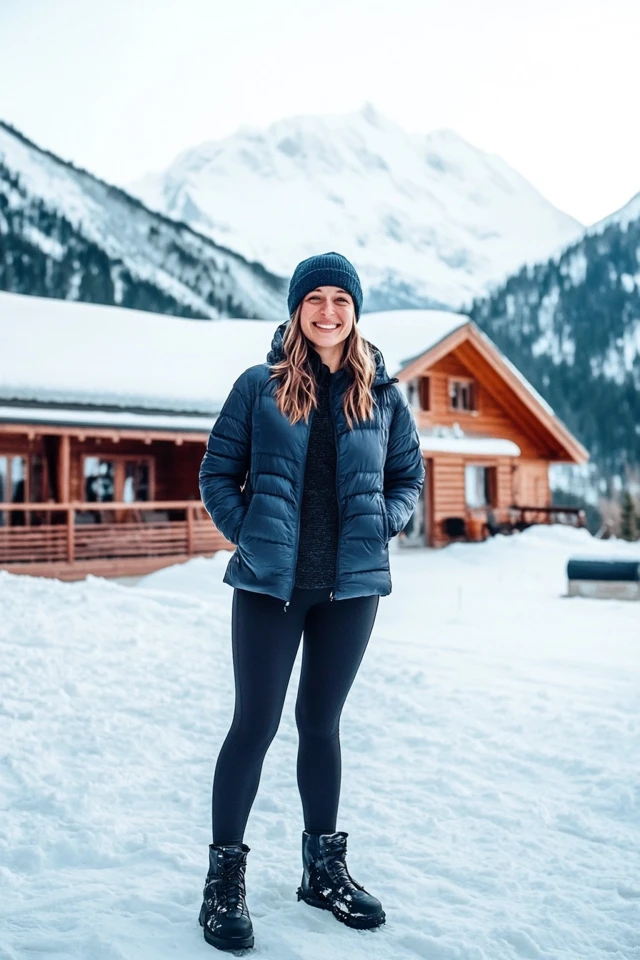
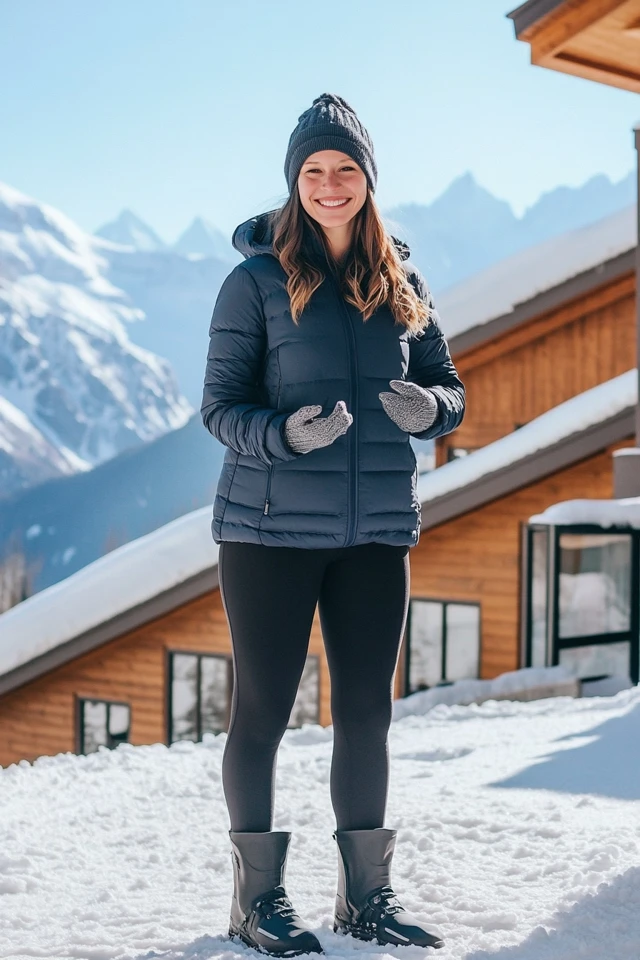

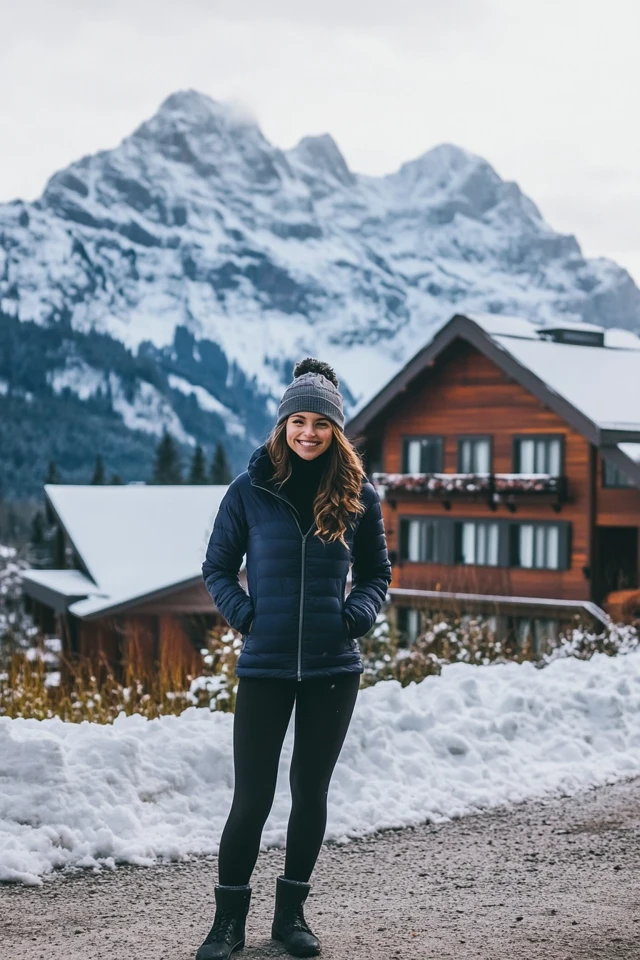
Adapting Your Wardrobe for Different Winter Activities
Winter destinations offer a variety of activities, each requiring specific wardrobe considerations. Here’s how to tailor your packing to different winter pursuits:
For Skiing and Snowboarding
When hitting the slopes, functionality and protection are paramount. Here are some specific tips:
- Layering: Start with moisture-wicking base layers, add insulated mid layers, and top with a waterproof ski jacket.
- Bottoms: Wear waterproof ski pants with insulation for warmth.
- Accessories: Don’t forget ski gloves, a helmet, goggles, and a neck gaiter or balaclava for added protection.
Pro Tip: Invest in high-quality, breathable fabrics to stay comfortable during intense physical activity.
For City Exploration
Exploring a winter city requires a balance of warmth and style. Here’s how to pack for urban adventures:
- Outerwear: A stylish yet warm coat, such as a wool trench or a puffer jacket.
- Footwear: Comfortable, waterproof boots suitable for walking.
- Layers: Lightweight sweaters and cardigans that can be easily added or removed.
- Accessories: A fashionable scarf, beanie, and gloves to complete your look.
Pro Tip: Choose layers that can transition seamlessly from day to night, allowing you to maintain a polished appearance.
For Winter Hiking
Winter hiking demands practical and durable clothing to keep you warm and protected in rugged conditions:
- Base Layers: Thermal tops and bottoms made from moisture-wicking materials.
- Mid Layers: Fleece jackets or insulated vests for added warmth.
- Outer Layers: Waterproof and windproof jackets and pants to protect against the elements.
- Footwear: Insulated, waterproof hiking boots with good traction.
- Accessories: A warm hat, gloves, and gaiters to keep snow out of your boots.
Pro Tip: Pack extra layers in your backpack to adjust to changing weather conditions during your hike.
For Après-Ski and Evening Activities
After a day on the slopes, comfort and warmth are key for evening relaxation and socializing:
- Clothing: Comfortable sweaters, cozy leggings, and soft scarves.
- Footwear: Warm slippers or comfortable boots to wear indoors.
- Accessories: A plush blanket or shawl to wrap around yourself while unwinding.
- Outerwear: A stylish coat to wear when heading out for dinner or social events.
Pro Tip: Choose versatile pieces that can be dressed up or down to suit different evening plans.
Sustainable Packing: Eco-Friendly Winter Travel Tips
Traveling sustainably is essential for preserving the beauty of winter destinations. Here are some eco-friendly packing tips to incorporate into your winter wardrobe:
1. Choose Sustainable Materials
Opt for clothing made from sustainable and eco-friendly materials. Fabrics like organic cotton, recycled polyester, and responsibly sourced wool minimize environmental impact.
- Example: A down jacket certified by the Responsible Down Standard (RDS).
- Pro Tip: Look for brands that prioritize sustainability and ethical manufacturing practices.
2. Invest in High-Quality, Durable Clothing
High-quality clothing lasts longer and reduces the need for frequent replacements, minimizing waste and environmental impact.
- Example: A well-made, insulated parka that can withstand multiple seasons.
- Pro Tip: Prioritize durability over fast fashion to build a timeless winter wardrobe.
3. Pack Light and Multi-Purpose Items
Packing light reduces the weight of your luggage and the energy consumed during transportation. Choose multi-purpose items that can be worn in various settings.
- Example: A versatile fleece jacket that can be used for hiking, lounging, or as an extra layer.
- Pro Tip: Select pieces that can be easily layered and mixed to create different outfits without overpacking.
4. Use Reusable Accessories
Replace disposable items with reusable alternatives to reduce waste during your travels.
- Example: A reusable water bottle instead of single-use plastic bottles.
- Pro Tip: Bring a reusable shopping bag for souvenirs and other purchases.
5. Care for Your Clothes Properly
Proper maintenance extends the life of your clothing, reducing the need for replacements and minimizing environmental impact.
- How-To: Follow care instructions, avoid over-washing, and store your clothes properly to keep them in good condition.
- Pro Tip: Learn basic repair skills, such as sewing on a button or fixing a small tear, to prolong the life of your garments.
Conclusion: Stay Warm, Look Cool
Packing for cold climates doesn’t have to be a hassle. With the right strategies and a thoughtful approach, you can create a functional and stylish winter travel wardrobe that keeps you warm and comfortable throughout your trip. Remember to focus on layering, choose versatile and sustainable pieces, and plan for the specific activities you’ll be enjoying.
Reflecting on my own frosty fiasco, I can attest to the importance of smart packing for winter destinations. By investing in the right layers and accessories, and by organizing your wardrobe efficiently, you can fully embrace the beauty and excitement of winter travel without the discomfort of inadequate clothing. So, pack wisely, stay warm, and embark on your winter adventures with confidence and style!


